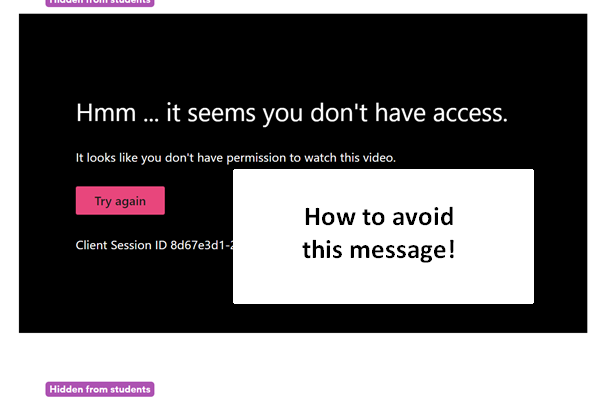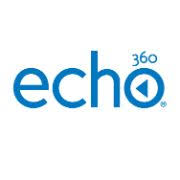
December 2, 2021, by Helen Whitehead
Advent calendar #2: How to make a Stream video available to students
So you’ve made a recording of yourself wishing your students a seasonal greeting. How best to share it with the students? When staff make recordings of Teams meetings and learning sessions, the recording ends up in Stream. Here’s why leaving them in Stream isn’t usually the best way to make these available to students.
Normally, lecture engagement sessions in Teams are the kind of interactive and unscripted session that it isn’t worth recording – you have to be there for it to make sense, like a lively seminar session. But sometimes, as with seminars, there is some content that may be worth providing as a video recording. Many lecturers also use Teams sometimes to record their video lectures. (I myself often create video introductions to modules that way.)
If the recording is related to a taught module, then it’s likely that it will need to be visible to other contributors to and students on the module. If they appear in Stream and you just leave the link in the Chat or give students a link to the video, then you can face a number of issues:
- Managing permissions in Stream can be complicated, and fiddly.
- By default permissions are set so that students who did not come to the sessions cannot see the recordings.
- Leaving a video in Stream means it is in the personal space of the person who recorded it, and could disappear if you leave the University, or become unavailable if you are ill or away for a time.
- Videos in Stream are not backed up when we archive a module, as they aren’t in Moodle or the video services that we archive.
- Microsoft are soon to be changing the way that recordings are stored – they’ll go into OneDrive or Sharepoint for a time that’s as limited as 30 or 60 days.
Given these caveats, it becomes even more important to put learning materials into a video server that’s designed around student experiences and the academic calendar.
 To solve permissions problems, and get the benefits of captions and engagement statistics, download the video from Stream and upload it to Echo360 Engage. Then you can make it available in Moodle really easily. It’s almost like magic!
To solve permissions problems, and get the benefits of captions and engagement statistics, download the video from Stream and upload it to Echo360 Engage. Then you can make it available in Moodle really easily. It’s almost like magic!
To download a video from Stream:
- Go to Stream, either from your Office 365 Web apps interface (click on the grid icon from any O365 application) or https://web.microsoftstream.com/.
- Log in if required.
- Go to your videos: click My Content and select Videos.
- Click on the three dots next to the video you want, and select Download video.
- Uploading videos to Echo 360 Engage including adding the video to your class (i.e. the module).
- Then link to it from Moodle.
- How to add Engage recordings, via the Echo360 Engage link in Moodle.More resources on Echo360 Engage can be found at the list of Engage Resources.
Advent Calendar 2021
No comments yet, fill out a comment to be the first

Leave a Reply